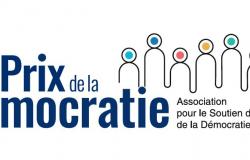For François Collet of DNCA Investments, a level of 3.37% seems to be a good estimate of the Fed’s rate landing point.
Achieving year after year a performance superior to that of the benchmark index in the bond sector is the objective sought by DNCA Investments with one of its funds which invests mainly in government bonds. How can we best navigate today between the expectations – sometimes exaggerated by market participants – regarding key rate cuts from central banks and the scenario of a possible recession which has never materialized until now? Overview with François Collet, Deputy CIO & bond manager at DNCA Investments.
Despite the cycle of rate cuts started by the American Federal Reserve (Fed) in mid-September, you believe that there is no reason to rush to buy debt securities with a view to a rapid decline in rates. Why is it better to remain cautious as a bond investor, even during times of falling rates?
Investing in the bond market means confronting market expectations. If the drop in rates were to be more pronounced than what is already anticipated by market participants, this would mean that the appreciation potential is not yet exhausted. On the other hand, if the drop in rates were to be less marked than expected, then this potential would be more limited – these securities could even lose their value. The whole question is to correctly assess what the pace of rate cuts will be and to anticipate what the lowest point of central bank terminal rates will be in the current cycle.
“We will still have to be patient to see inflation fall towards levels close to 2%. This will probably not happen before spring 2025.”
Currently, we observe that inflation continues to fall on both sides of the Atlantic, in particular due to the fall in energy prices. In the United States, significant immigration has also helped to limit wage pressures, which has reduced inflationary pressures in the short term.
In the United States, underlying consumer spending inflation nevertheless remained at a relatively high level of 2.7% in August, after 2.6% in July. Don’t these figures, published at the end of September, show that we perhaps declared a little too quickly that inflation had been overcome in the United States?
We will still have to be patient to see inflation fall towards levels close to 2%. This will probably not happen before spring 2025 despite the drop in oil prices. This justifies the Fed’s cautious approach, which the markets sometimes have a little difficulty hearing.
The decline in inflation also continues on the Old Continent. The euro zone’s annual inflation rate for the month of September, published at the beginning of October, stood at 1.8%, according to Eurostat, compared to 2.2% last August. Inflation in the euro zone is therefore below the 2% objective targeted by the ECB, for the first time since 2021. Should we now expect much more aggressive rate cuts from of the ECB in the coming quarters?
Yes, the ECB will accelerate its rate of decline to take into account this decline in inflation and the slowdown in activity in the euro zone. The ECB is now expected to move to a downward pace at each meeting until the first quarter of 2025. However, its downward cycle will be limited by still persistent inflationary pressures. European productivity is low, and inflation in services has not fallen since the start of the year, it is still at 4%, which will limit the ECB’s ability to relax its monetary policy.
“The real question that arises is what would happen if economic growth really slowed down in France – would we reach a budget deficit of 8, 9 or 10%?”
Concerning the overall trajectory of rates, you believe that market expectations are perhaps exaggerated on this subject in the United States. How far should interest rates fall across the Atlantic?
The markets anticipate a reduction in key rates of up to around 2.8% in the United States at the end of 2025. This seems a little exaggerated to us. Our expectations regarding key rates are that there will be another 25 basis point cut in 2024, followed by cuts totaling 100 basis points in 2025. Overall, we should instead expect key rates to be around around 3.25% or 3.37% at the end of next year. 3.37% seems to us to be a good estimate of the Fed’s rate landing point. In our opinion, some investors have gone too far in their expectations of a reduction in key rates – this creates risks of underperformance.
Concerning state debt, you believe that public deficits remain a sword of Damocles for most developed countries. In France, in particular, there is a lot of debate currently about how the budgetary situation will evolve over the coming months. What could be the concrete implications of a worsening budget deficit for bond investors?
The critical aspect is that we are witnessing a much faster deterioration in the budgetary situation than was forecast at the start of the year. At the start of the year, the government forecast a decline in the budget deficit of 5.5% which should be reduced to 5% by the end of 2024. However, today, forecasts are going in the other direction. Despite GDP growth which is holding up, we expect a public deficit higher than expected in France. The public deficit could even exceed 6% of GDP, according to some forecasts. The real question that arises is what would happen if economic growth really slowed down in France – would we reach a budget deficit of 8, 9 or 10%? Bond investors must today take into account the uncertainties linked to budgetary developments when investing in government bonds.
“Our objective is always to generate a superior performance of more than 2% compared to the benchmark index.”
Another aspect has also been followed with great attention since last spring: the gap between 10-year rates on French and German debt. What developments do you anticipate on this subject?
This rate gap has always existed – with phases where it was more or less pronounced. As a bond investor, we mainly seek to anticipate whether this spread will widen further or whether it will narrow. In addition to the evolution of the budget deficit as such, it will also be necessary to carefully monitor any possible adaptations to the ratings assigned to French debt by the major rating agencies over the coming months.
Regarding investor interest in a fund dedicated to international bonds, does a gradual decline in the level of interest rates tend to strengthen or reduce the attractiveness of this type of investment?
The current interest rate environment is obviously very different from that which prevailed for example in 2017, when we relaunched this strategy at DNCA, when investors were primarily concerned with escaping negative rates. When interest rates began to rise due to a more inflationary context, we might have feared that certain investors would turn away from this type of investment. However, this was not the case. Our objective is always to generate a superior performance of more than 2% compared to the benchmark index. When rates were close to 0%, a yield of 2% was attractive. When they were between 3 and 4%, a return of around 5% to 6% was also attractive. The fact that we obtained good performance in 2022 and 2023 reassured investors in their choice. Achieving year after year a performance superior to that of the benchmark index by a few dozen basis points may not be spectacular, but that is what counts for investors who rely on this type of solution.






